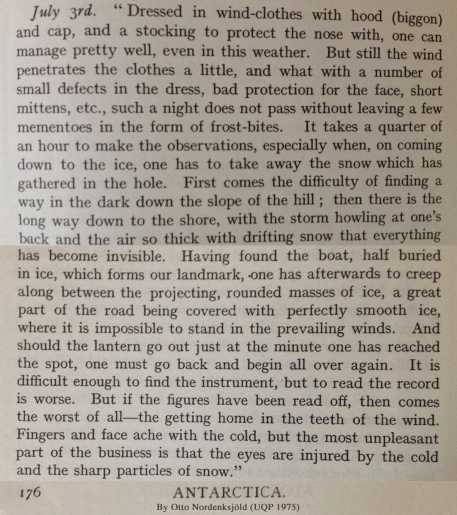The last month, I’ve been alternating between polishing (and submitting) picture books, and writing poetry. I’m busily at work on my Antarctic historical verse novel – trying new poetic forms and realising all over again how beneficial poetry is for writing. Truly seriously, if you are a principal, literacy coach, or classroom teacher (if you value writing muscle and creativity), you NEED poetry in your classrooms. Regularly! I know I say it often – but after an extended period of time fashioning facts into strict poetic forms I’m going to say it again – nothing builds writing muscle better than poetry. Nothing sparks creativity, wordplay and experimentation with literary devices better than poetry. It’s a challenge. It’s invigorating and rewarding. It’s valuable. It’s FUN!
Why aren’t we encouraging and enabling more kids to write more poetry?
Why do we clutter their curriculum with so many persuasives that kids can’t even be persuaded to want to WRITE!? Everything feels so prescribed. Actually, I had a little rant about something similar on Twitter last week. So maybe I should just combine the two, and do the job properly! In the hope that someone who writes curriculum might one day stumble on my blog, I’m just going to include a couple of the tweets here…
To illustrate my point, about the muscle, creativity and economy of poetry, I’ll include a little snippet from my Antarctic WIP. And a picture. From Antarctica… (Any excuse to revisit Antarctica!!)
The poem is a tetractys, (or in this case, a double tetractys) and follows a specific syllable count.
Line 1 – 1 syllable
Line 2 – 2 syllables
Line 3 – 3 syllables
Line 4 – 4 syllables
Line 5 – 10 syllables
The double tetractys reverses the syllable count in the second half. A tetractys can rhyme. Often mine do – but in this one I was focused on the facts and wordplay. And so many details! (Read more about the tetractys.)

The process. Early versions of a tetractys draft – though I know there were many other combinations that don’t seem to be in my document. #Ooops There are ERRORS in the above, btw. Can you spot them?

The portion of text that shaped the poem.
Current version (after three days of tweaks) – which I can’t guarantee won’t change… but I’m feeling pretty chuffed with!
Dark
hill slope,
blinding snow,
slick, too-smooth ice,
frozen obstacle course and push-pull squalls.
Do not snuff the lantern! Record results.
Face and fingers
frostbitten;
wind has
teeth.
Tetractys © Kathryn Apel 2017 – All rights reserved

Different bay, different season, different era, different character, but… Antarctica! (So that’s okay – right?) #breakingalltherules
There are so many different forms of poetry – something for every reader, writer and situation. Some forms have ‘rules’, like the tetractys, while others offer freedom. Poetry is a wealth of creativity just waiting to be unleashed!
Irene will help you Live Your Poem (Yay!) as she collects the links for the #PoetryFriday round-up today. Thanks, Irene. Whether you’re a reader, a writer, an educator or a student, (anyone, really) I’m sure you’ll find good stuff there!
Hi Kat! I love your philosophy! We need to empower our kids to respond with their choice of writing. Also, I enjoy seeing your revisions here. This poem, this book, has teeth! As it should! I mean, Antarctica! Can’t wait to read it. XO
LikeLiked by 1 person
Thanks, Irene. I hope you’ll love it! It’s been such a fascinating project. Because, yes, Antarctica! xx
LikeLike
“Do not snuff the lantern!” makes it feel even more dangerous, gives me a chill…
I love “chuffed” as a descriptor!
LikeLiked by 1 person
Does ‘chuffed’ not get used in America? It’s such a beautiful word/feeling. 🙂
LikeLike
Amen! When I was teaching, I always started the year with teaching poetry, but I had to explain every year why I did and how it met the goals and objectives. I tried to work it in as much as I could–as you say it is powerful writing that exercises writing muscles–but it got harder and harder. By the end I was limited to teaching only the writing found on standardized tests. Yuck! The students are the ones who missed out.
LikeLiked by 1 person
And I loved seeing your multiple drafts of your WIP! I agree, you should feel chuffed after such good work!
LikeLiked by 1 person
That sounds like such a familiar story, Kay. I loved my first years of teaching – when it was a joy of learning for kids and teachers and classrooms bubbled with infectious enthusiasm…
And thank-you. 🙂
LikeLike
Fortunately, my teaching lay in an independent school with much choice in the way we wrote! My granddaughter (last year in 2nd grade) did loads of poetry and I think her ability to read, write and think grew immeasurably! This year, more practical curriculum, at least that’s what is told. Your poem made me shiver, a hard-too-imagine scene! And if that lantern goes. . . oh no!
LikeLiked by 1 person
What a joy your granddaughter’s 2nd grade must have been! I think teachers bring individual strengths to classrooms, and that is what makes their take on curriculum memorable. Especially when driven by the needs and interests of the kids. I’m sure we’ll get back to that… eventually… but at the moment, the little factory is trying hard to squeeze out boxes.
That’s partly why I love author talks so much. As an author, I can be shaped my knowledge of teaching/curriculum – yet not constricted by it. And teachers and kids are just waiting to burgeon creatively. #allaboutpassion
LikeLike
Hooray for being persuasive with this playful post, Kat! Love the final version of your poem.
LikeLike
Ha! I didn’t even think of that. 🙂 And thank-you.
LikeLike
Well, you get a big AMEN, SISTER out of me. The more poetry, the better…everything. And, I really love this look at your drafting. It’s amazing to me how much time one can spend on tweaking the words. How walking away to make dinner is exactly when the right word pops into my brain….and my hands are wet. Can’t wait to see a verse novel on Antarctica from you. Keep writing. We need the words!
LikeLiked by 1 person
Thanks for the encouragement, Linda.
Sometimes writing a poem is so quick and easy! #andthenyoustarttotweak
Poems often fall into place when I’m chopping vegetables – or in the shower! (I have been known to have a waterproof notebook in the shower…)
LikeLike
I love that your wind has teeth. I’ve been bitten myself in January or February. I agree that the kids have less room for creativity and genre choice, but teachers are getting squeezed, too. The obsession with testing is sad, and it’s making us all hostages to the tests.
LikeLiked by 1 person
You are so right, Brenda. There are so many great teachers being stifled by the demands of curriculum – and the job in general. #sosomuchtodo So glad you like my toothy wind. 😛
LikeLiked by 1 person
What a great post, Kat. Interesting seeing your process and loved that you shared your twitter thoughts about writing in the classroom. Wholly agree that poetry builds writing muscle like no other form, and that students should be encouraged to try different forms and to write for pleasure. 🙂
LikeLiked by 1 person
Thanks, Jama. When you’re writing what you love, (or about your passions) you want to create. (Probably a lot like cooking, too. :P)
LikeLike
Fantastic post, Kat! I’m a teacher who loves poetry, yet struggles to slip it into the classroom because our schedule is to-the-minute with curriculum demands. I’m increasingly frustrated by that. I also yearn to give students more choice in writing and the option to write for pleasure. Again, this is a struggle. Sigh. I so enjoyed learning about tetractys (Love how they look on the page!) and seeing examples from your WIP. The original text you included is bone-chilling! Such great details to work with. I can’t wait to see your final product!
LikeLiked by 1 person
Keep doing all that you can, Molly – because your kids will be benefitting from every bit you squeeze in. (And so will you! 🙂 ) Glad you enjoyed the tetractys process. It is such a fascinating project to work on!
LikeLike
Yes, preach it, Kat! Your enthusiasm is contagious. I’d wager no child leaves your class without some close and positive encounters with poetry. Really enjoyed that peek-in at your process!
LikeLiked by 1 person
Haha. People frequently comment that they like to see someone so passionate about what they do. I hope they mean it. 🙂
LikeLike
I like the challenge in your post and the determination. I think kids/students like a challenge with some freedom. Here’s hoping we can get more poetry into their lives, thanks for your poem and images Kat!
LikeLiked by 1 person
I agree, Michelle. It is good to be able to choose a challenge – and rewarding to achieve it. Sometimes kids like to have boundaries to operate within – and other times they just want to write as it flows. It’s all important.
LikeLike
I loved how you showed us the many revisions of your poem. And as a fellow teacher, I truly appreciate your passion for including poetry in the classroom. For the time being, I have left the classroom to home school my daughter. I love it when, without compulsion, she tries her hand at the various poetic forms she sees me learning and presenting on my blog. She is very good at expressing her thoughts, both in poetry and in prose.
LikeLiked by 1 person
What precious times with your daughter, Linda. Enjoy! Such a delight to hear her immersing herself in poetry with you. Thank-you for sharing.
LikeLiked by 1 person
You’re welcome. 🙂
LikeLiked by 1 person